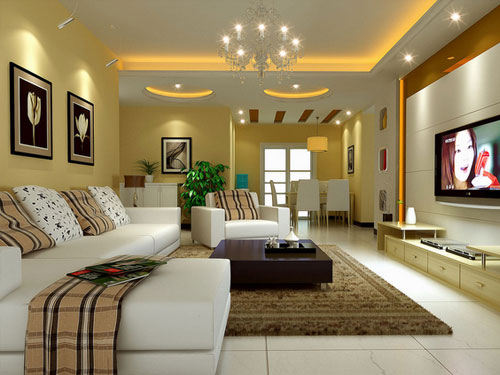The wall is one of the essential elements that define a space. As a vertical surface, it serves as a boundary between the interior and exterior, significantly influencing how people perceive and interact with the environment. In wall design, every element—such as doors, windows, lighting fixtures, and ventilation openings—should be thoughtfully integrated into the overall composition. Only when these components are harmoniously combined can a cohesive and visually pleasing result be achieved.

**Wall Design**
When it comes to wall treatment, the key challenge lies in organizing doors and windows effectively. Doors and windows are "virtual" elements, while the walls themselves are "real." The way these openings are arranged directly affects the balance between the real and the virtual. Each wall may have different characteristics—some might be more open, others more solid, or a mix of both. It's important to avoid a uniform, repetitive pattern of virtual and real elements, as this can lead to a monotonous appearance.
Instead, doors and windows should be treated as part of a larger system. By grouping them into vertical or horizontal divisions, their individuality is reduced, and a sense of order is created. Typically, shorter walls benefit from vertical divisions, which add energy and movement, while taller walls are better suited for horizontal divisions, which provide a sense of stability and calm.
Beyond the contrast between solid and open areas, the repetition and alternation of window and wall patterns can also create a rhythmic beauty. For example, when windows are arranged in alternating sizes or paired together, the visual rhythm becomes more pronounced, enhancing the aesthetic appeal.
Another important aspect of wall treatment is maintaining the correct spatial scale. All elements attached to the wall—doors, windows, and decorative features—must be proportioned appropriately. Overly large or small elements can distort the perception of space, leading to an uncomfortable or unbalanced environment.
In the case of a living room, which often serves multiple functions such as relaxation, dining, and studying, the wall decoration plays a central role. Given its large size and prominent position, the wall's design, color, and style greatly influence the overall atmosphere of the room. The decoration should reflect the personal tastes and preferences of the homeowner, allowing for creative expression and the reflection of family identity. This approach ensures a vibrant and personalized living space.
**Principles of Wall Decoration Design**
1. **Authenticity**
While some interior designs use fake walls or columns to achieve a specific ambiance, it's crucial to maintain the integrity of the building’s structure. Authentic materials and design elements help create a more natural and cohesive indoor environment.
2. **Durability**
Walls are frequently touched and exposed to wear. Therefore, the materials used should be durable enough to withstand daily use, but not overly so, ensuring that all surfaces age at a similar rate for easier maintenance and future renovations.
3. **Functionality**
Walls play a critical role in the indoor environment, affecting sound insulation, temperature control, fire resistance, and moisture management. The choice of materials and design should align with the specific needs of the space.
4. **Artistry**
With their large surface area and close proximity to people, walls have a powerful impact on the mood and aesthetics of a room. Textures, colors, and shapes all contribute to the overall atmosphere. Decorative elements like murals, reliefs, or tapestries can enhance the cultural and emotional depth of the space, making it more engaging and meaningful.
Magnetic Stirrer
Magnetic stirrer is a laboratory instrument used to mix liquids or solutions by stirring them continuously using a rotating magnetic field. It consists of a small magnetic bar or stir bar that is placed inside the liquid to be stirred and a magnetic field generator, usually a small motor, that rotates the magnetic bar at a controlled speed. The magnetic bar is usually coated with a non-reactive material such as PTFE (polytetrafluoroethylene) to prevent it from reacting with the liquid or solution being stirred. Magnetic stirrers are widely used in chemistry, biology, and other scientific fields for various applications such as mixing reagents, dissolving solids, and preparing samples for analysis. They are preferred over conventional mechanical stirrers as they are more efficient, do not cause contamination, and are easier to clean.
We have large capacity magnetic stirrer,multi-position magnetic stirrer, mini magnetic stirrer, magnetic stirrer with heating plate etc.
Magnetic Stirrer,Magnetic Stirrer Mixer,Lab Magnetic Stirrer,Magnetic Hotplate Stirrer
Lachoi Scientific Instrument (Shaoxing) Co., Ltd. , https://www.lachoinst.com